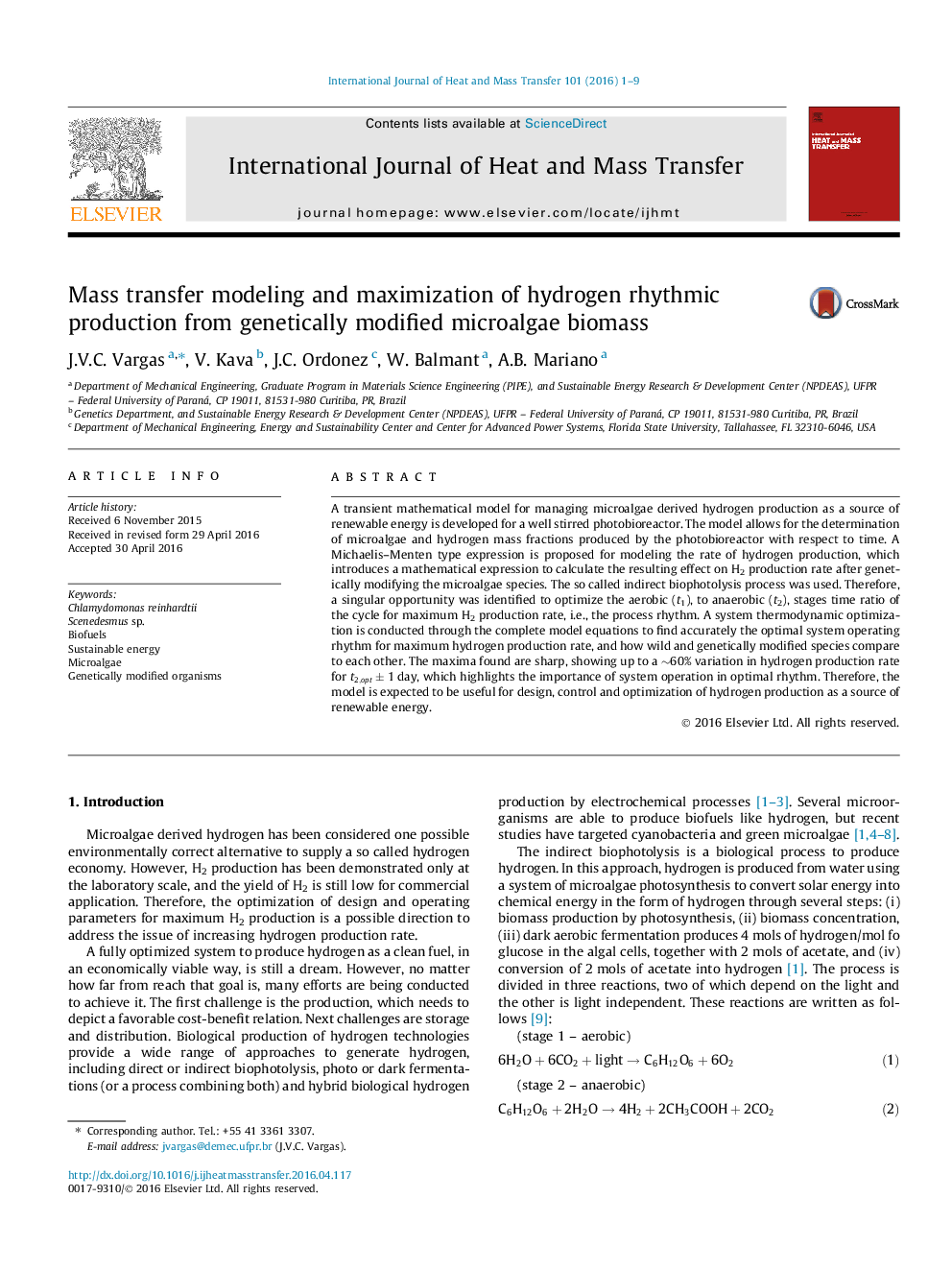| کد مقاله | کد نشریه | سال انتشار | مقاله انگلیسی | نسخه تمام متن |
|---|---|---|---|---|
| 7055139 | 1458041 | 2016 | 9 صفحه PDF | دانلود رایگان |
عنوان انگلیسی مقاله ISI
Mass transfer modeling and maximization of hydrogen rhythmic production from genetically modified microalgae biomass
ترجمه فارسی عنوان
مدلسازی توزیع جرم و به حداکثر رساندن تولید ریتم هیدروژن از زیست توده میکرو آلگهای ژنتیکی اصلاح شده
دانلود مقاله + سفارش ترجمه
دانلود مقاله ISI انگلیسی
رایگان برای ایرانیان
کلمات کلیدی
موضوعات مرتبط
مهندسی و علوم پایه
مهندسی شیمی
جریان سیال و فرایندهای انتقال
چکیده انگلیسی
A transient mathematical model for managing microalgae derived hydrogen production as a source of renewable energy is developed for a well stirred photobioreactor. The model allows for the determination of microalgae and hydrogen mass fractions produced by the photobioreactor with respect to time. A Michaelis-Menten type expression is proposed for modeling the rate of hydrogen production, which introduces a mathematical expression to calculate the resulting effect on H2 production rate after genetically modifying the microalgae species. The so called indirect biophotolysis process was used. Therefore, a singular opportunity was identified to optimize the aerobic (t1), to anaerobic (t2), stages time ratio of the cycle for maximum H2 production rate, i.e., the process rhythm. A system thermodynamic optimization is conducted through the complete model equations to find accurately the optimal system operating rhythm for maximum hydrogen production rate, and how wild and genetically modified species compare to each other. The maxima found are sharp, showing up to a â¼60% variation in hydrogen production rate for t2,opt±1day, which highlights the importance of system operation in optimal rhythm. Therefore, the model is expected to be useful for design, control and optimization of hydrogen production as a source of renewable energy.
ناشر
Database: Elsevier - ScienceDirect (ساینس دایرکت)
Journal: International Journal of Heat and Mass Transfer - Volume 101, October 2016, Pages 1-9
Journal: International Journal of Heat and Mass Transfer - Volume 101, October 2016, Pages 1-9
نویسندگان
J.V.C. Vargas, V. Kava, J.C. Ordonez, W. Balmant, A.B. Mariano,
